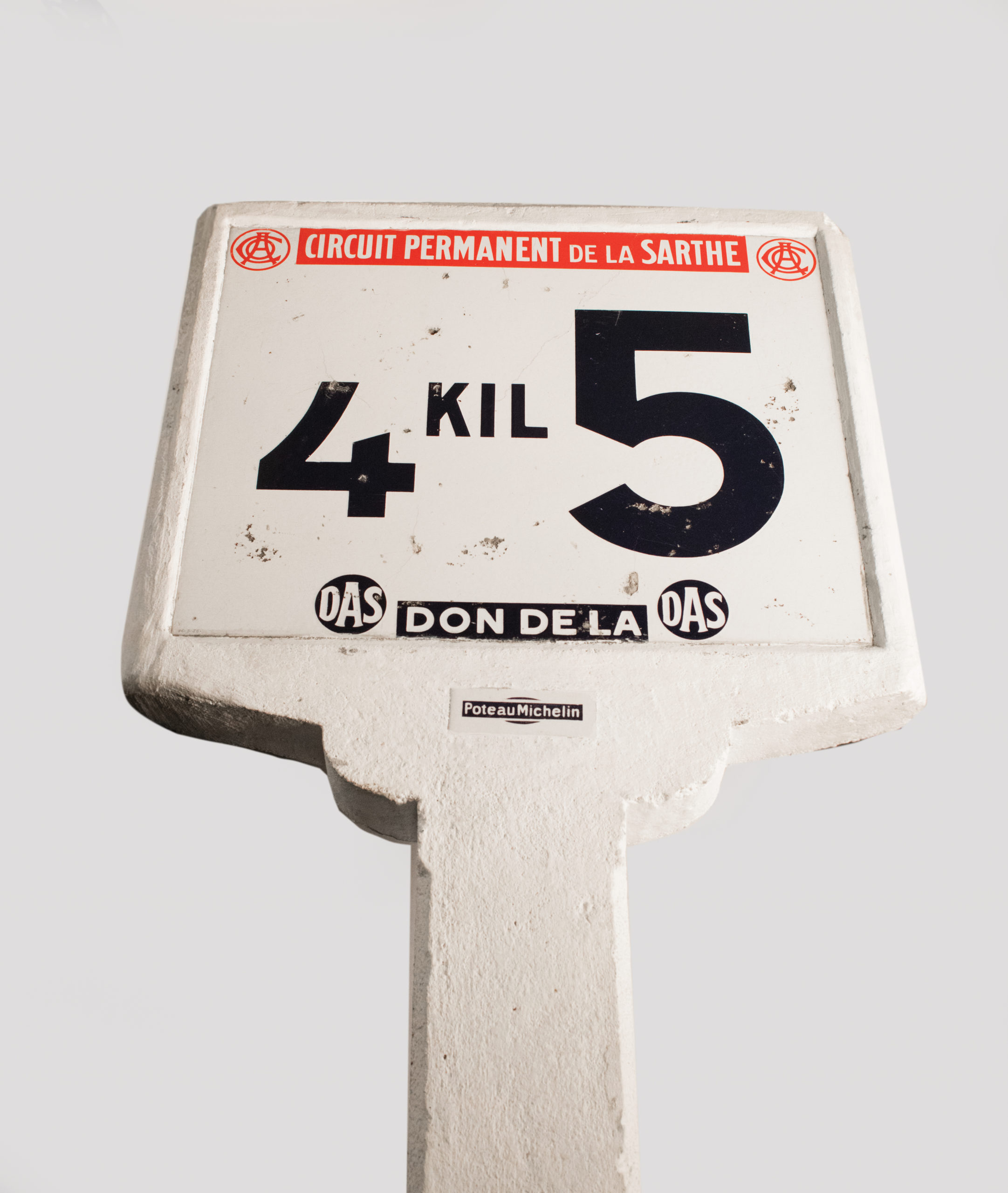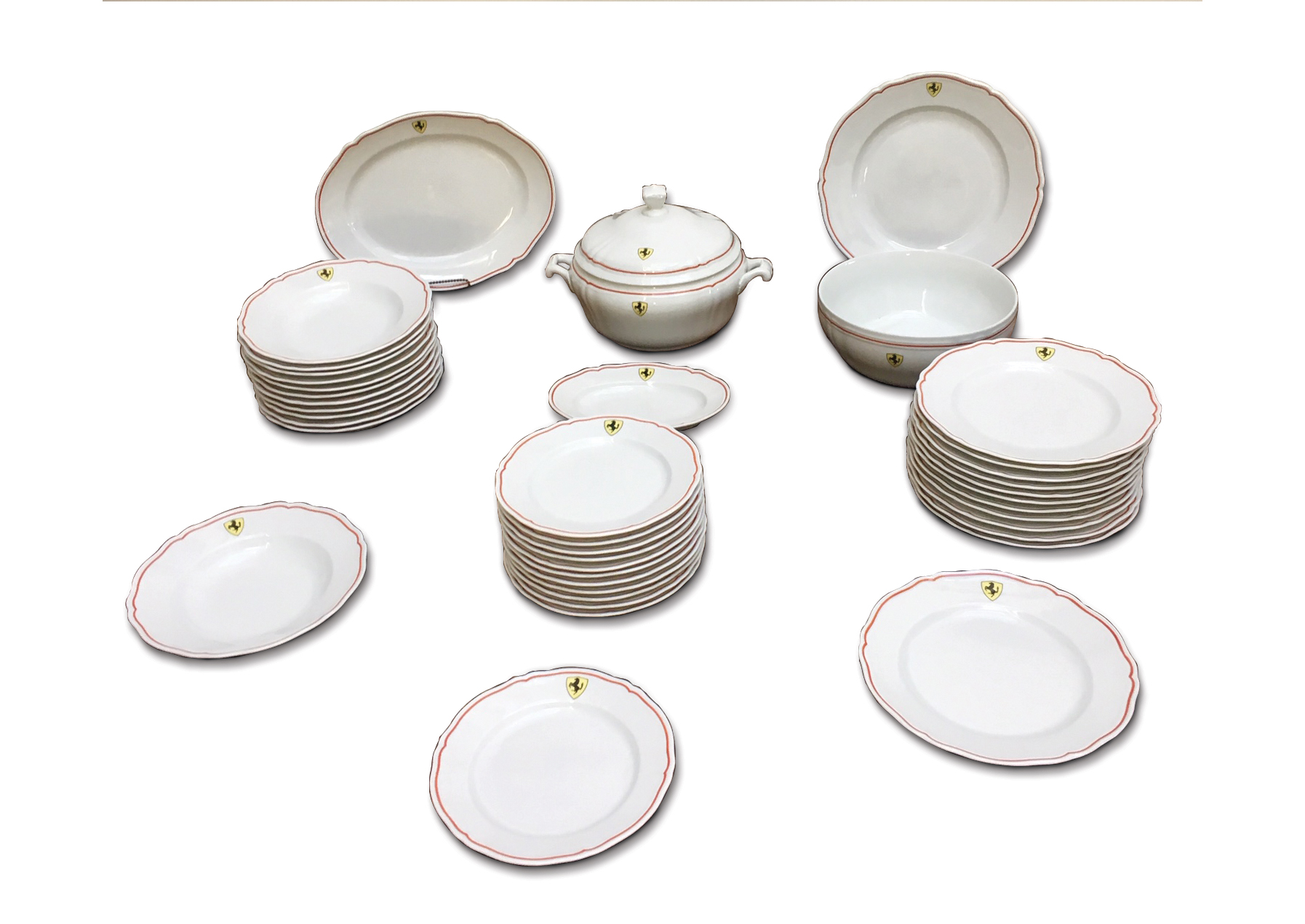USD 55,975 – the price of a meal with Ettore Bugatti and Enzo Ferrari
Cliff Goodall’s view
Photo credit: RM Sotheby’s, Artcurial, Bonhams
In 1969, Bill Bowerman, an athletics coach at the University of Oregon, keen to develop a new concept in sports footwear, experimented with his wife’s waffle iron, creating, together with his partner Phil Knight, a new type of sole for running shoes. Nike was born! The first lot of 12 pairs of shoes was delivered (probably as a gift) to US athletes ahead of the 1972 Munich Olympics. Last July, a single pair of these prototype shoes (never worn) crossed the block at Sotheby’s for USD 437,500! A pair of shoes might seem to have nothing in common with cars and the car world, were it not for one consideration: 99% of the value of those shoes was down to their history, and just 1% to the product per se.
Here, then, we take a look at four examples of objects whose history, far exceeding their economic value, determined their worth.
Let’s take racing suits. In this category, I am tempted to start by citing the sale of the suit used by Steve McQueen in the movie Le Mans (sold for EUR 48,000 by RM Sotheby’s in Monaco in 2018), but this example doesn’t really count: after all, simply the name Steve McQueen raises the value of anything associated with it. The lot that immediately preceded it on that occasion was the suit worn by Ayrton Senna during the 1987 season. This fact alone is enough to justify the EUR 38,400 paid for it. But there is more to this suit than that: it is the one he used at 1897 Monaco Grand Prix, the year he notched up the first of his six victories there. And if that were not enough, this race was the last Formula 1 GP ever won by a Lotus. Is that enough history for you?! Considering that this purchase represents an almost EUR 10,000 saving compared with the Steve McQueen suit, if I were the buyer, I’d be tempted to spend the difference on Senna’s go-kart (this fetched GBP 12,000 at an RM Sotheby’s sale in London, also in 2018), but that’s another story…
But mystique certainly isn’t the prerogative of the racing world.

In September 2019, RM Sotheby’s organized an auction dedicated to the Taj Ma Garaj Collection, an eccentric (to say the least) collection of Volkswagens and Porsches, and to the whole world of memorabilia linked to them. The most fascinating lot, with the most interesting history, was probably the Porsche engine for helicopters! Yes, you read that right! In 1961, the Stuttgart-based manufacturer offered the US army some modified 356 engines to test on the XRON-1, a one-man reconnaissance helicopter. However, only five were actually produced in this configuration. Subsequently, the same engine was also used for the QH-50 DASH, a special, remotely piloted helicopter. The QH-50 is acknowledged as history’s first drone and it is powered by Porsche. Its sale price? USD 14,400.

The next story also concerns an object closely linked with the car world.
In 1930, ACO, organizing the 24 Hours of Le Mans, decided to install thirty kilometer panels along the route to show the race drivers where exactly they were on the circuit: a forerunner of telemetry! Remarkably from today’s perspective, although this was typical at the time, these panels were made of concrete. Just imagine driving a Bentley Blower at 200 km/h along the Mulsanne Straight and accidentally clipping a concrete panel! In short, the removal of these blocks in the 1960s needs no explaining. Between December 2017 and July 2018 two of these “relics” were sold: one fetched USD 12,000 at an RM Sotheby’s sale; the other, which had been situated at the 5 km point on the Hundaries Straight, was sold for EUR 11,050 by Artcurial. Interestingly, written small, below the kms, there are the words: “Poteau Michelin”. What is the significance of this detail? Well, in the 1920s, to encourage travel (and therefore tire consumption), Michelin, in addition to publishing its famous Red Guides, also donated thousands of road signs, many of which — especially in the countryside — are still in use today.

And so, on to our next story, which features Ferrari.
Beppe Neri, the late manager of the ‘Ristorante Cavallino’, which is located directly opposite Ferrari’s historic entrance, commissioned Italian company Richard Ginori, renowned fine porcelain maker, to produce dinnerware for his restaurant. The pieces were branded with a logo inspired by Ferrari’s own one, although the original, classic shield logo of the “Scuderia” is different: narrower and topped with the colors of the Italian flag. This really amounted to “image theft”, which is something Enzo Ferrari would normally never have tolerated. But the “Commendatore”, as everyone called him, also understood what was to be gained from this free advertising aimed at his own potential customers, who could thus come to Ferrari and order a 512 BB or 400 without being distracted by a plate of tortellini!A service made up of 41 pieces, all carrying the restaurant’s version of the prancing horse logo and edged in red, was sold by RM Sotheby’s for USD 18,400 last October (tortellini not included!).

But the last story is the best of all…
Few know that Ettore Bugatti was a lover not only of horses, but also of fine food. When his personal chef told him that their pasta-making machine was broken and would take some time to repair, the distinguished founder lost no time in getting the problem sorted, using parts intended for his magnificent cars! Thus, a Bugatti Type 46 steering wheel was used in place of the hand crank to operate the machine. On “steering” the pasta maker, the spaghetti emerges from the machine almost by magic. Fantastic! At Amelia Island in March, Bonhams sold this piece of history for an incredible USD 37,575 (smashing the pre-sale estimate of USD 5-10,000).